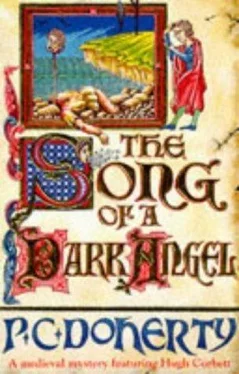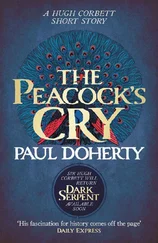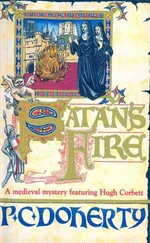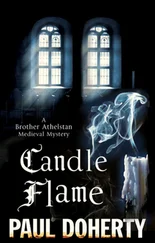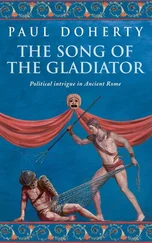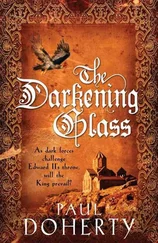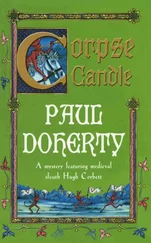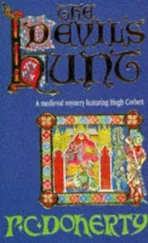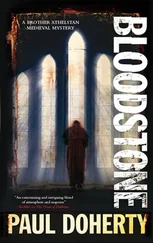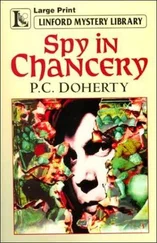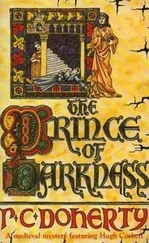'But we have found the treasure,' Ranulf interrupted.
'No! We only found Alan of the Marsh's share. Where did Holcombe hide the rest, eh?' Corbett stared out over the moors, where the morning mist still hung in thin grey wisps. 'Some of the treasure's still here. As long as the stories persist, so will the searching.' Corbett stared once more at the scaffold and crossed himself. 'Ah well, and now for Bishop's Lynn!'
'Why there?' Ranulf asked.
'I want to talk to the miller about his daughter. I want to tell him that he, too, owned a treasure of great price.'
Corbett dug his spurs into his horse. Behind them the scaffold creaked as the wind rose and the dark angel swept in from the sea to sing its eternal song above the desolate moors. Author's Note
There are several strands to this story, all based on fact rather than fiction. The Pastoureaux or Shepherd's Movement in France, and the rest of Europe, is well documented in the 13th and 14th centuries. A lay visionary movement which went terribly wrong, the Pastoureaux acquired the reputation for being nothing better than gangs of criminals. For a brief time, they even enjoyed royal patronage until their true nature was revealed. They became involved in robbery, rape, rapine, pillage and extortion. In England their presence led to violent affrays at Shoreham in Sussex. Eventually, condemned by Church and state, the Pastoureaux were hunted down and their leaders hanged. Their followers dispersed until the next new cults appeared, as they did with alarming regularity during the medieval period.
The church had always condemned slavery. However, the kidnapping of young men and women from Western Europe for sale in the markets along the Mediterranean and Middle East was a well-known medieval scandal. It was much more sinister and wicked than the white-slave trade of Victorian imperialism. Time and again, popes thundered their condemnation and kings issued orders, but the trade continued to thrive. The most flagrant example of this is mentioned in the novel, the Children's Crusade, a visionary crusading movement which led to death and abuse for thousands of the children involved. They never reached Palestine, but became the prey of mercenary ships' captains and greedy slave-masters.
King John's debacle at the Wash in the autumn of 1216 is, of course, well documented, though historians heatedly debate the exact location of the disaster and the causes behind it. Treason and treachery have never been ruled out. After all, here was an autocratic king with his army and household who decided to cross one of the most treacherous coastal areas of Britain without any proper reconnaissance or guide. There was no need for such haste. King John was not being pursued and the march should have been more properly organized. The loss of his treasure in the Wash probably resulted in John's demise a few weeks later.
The lost treasure constantly attracted fortune-hunters to the area. The imperial regalia were never recovered but, during the 13th century, items of this treasure do reappear on treasury lists and we know that both Henry III and his son Edward I regularly organized official searches for this treasure. The Wash, Hunstanton, the moors and the coastline can still be visited, though there have been marked geographical changes since the 14th century. Nevertheless, the main features are as described in this novel. The Hermitage is based on the ruins of what used to be called St Dunstan's Hostelry for travellers wishing to cross the Wash. The cliffs are there, as is the village of Hunstanton. So, of course, is the lovely, bustling town of King's Lynn. Before anyone writes in to me to point out my mistake, King's Lynn was actually Bishop's Lynn and only renamed during the reign of Henry VIII.
And the treasure? Local stories and legends say that most of it is still hidden away. The museum at King's Lynn is supposed to have one or two items but the rest could still be hidden in those lonely marshes where the SONG OF A DARK ANGEL can still be heard!
